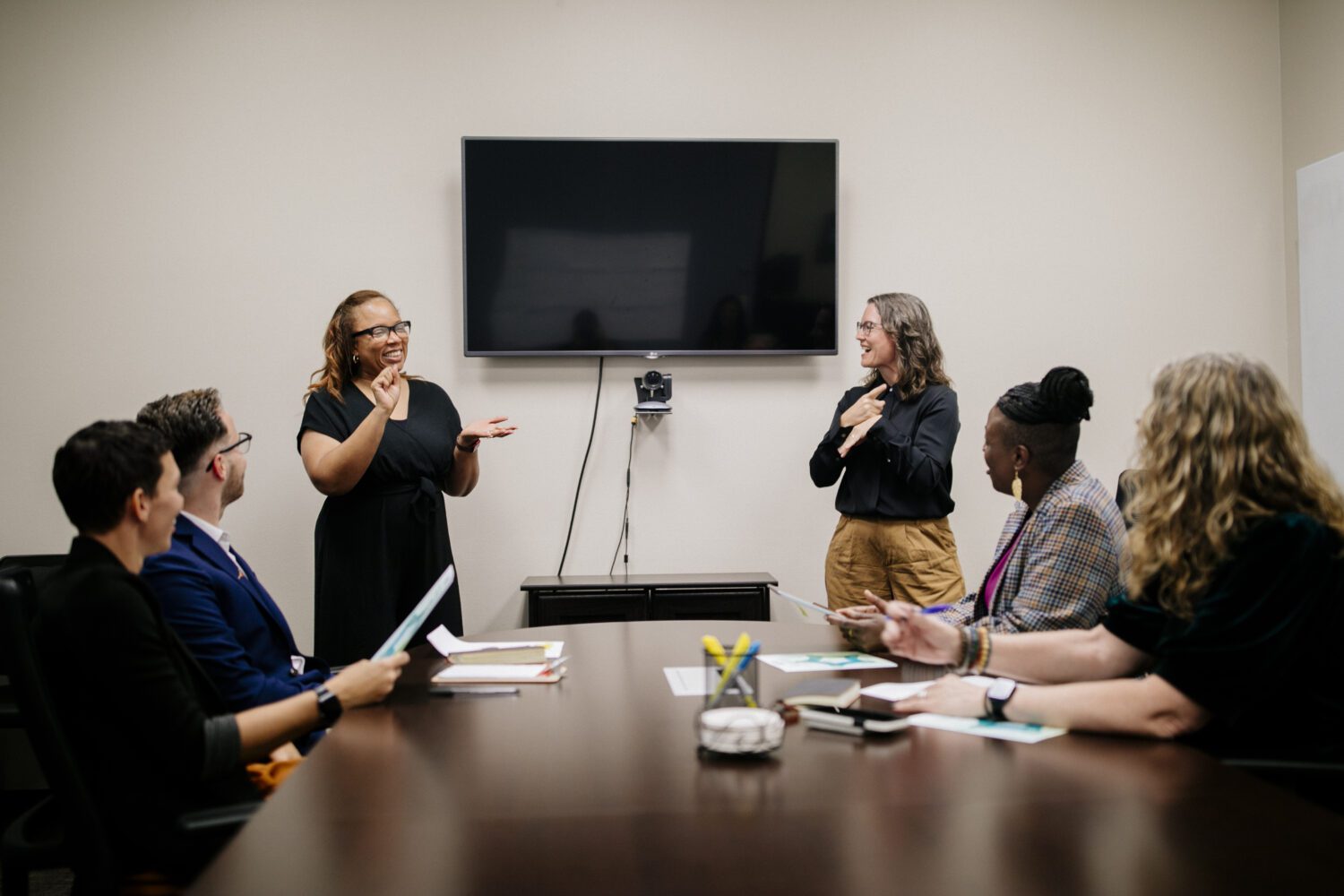“There has been no institutional interest in learning how to become more deaf friendly. The attitude is one of begrudging tolerance at best.”
Deaf students across the country echoed this student’s story in the 2018-2019 Deaf College Student National Accessibility Report, “ACCESS Is More Than Accommodations,” released today by the National Deaf Center on Postsecondary Outcomes.
The report reveals the experience of deaf students on campus and introduces a groundbreaking measurement tool to help campuses better understand how accommodations fit into a broader definition of campus access.
ACCESS is more than Accommodations
On average, deaf students rated accessibility at their campus at a 3.2 out of 5, using the ACCESS measurement tool pioneered in the report. ACCESS stands for Attitudes, Campus Technology, Communications, Environment, Services, and Social Engagement. Those six areas are the keys to ensuring that deaf students are able to fully engage in the college experience.
Research has shown that students who are active and engaged on campus are more likely to earn their degrees. Yet, the results of this survey survey show that many deaf students are not able to engage in extracurricular events and activities, because their access may be limited to accommodations in the classroom.
“I do not get to participate in as many campus activities, especially groups, because services are not easy to come by,” said one student.
Here’s how campuses scored overall on each of the ACCESS areas:
-
Attitudes: 3.5 out of 5.
-
Campus Technology: 2.9 out of 5.
-
Communications: 3.3 out of 5.
-
Environment: 3.1 out of 5.
-
Services: 3.5 out of 5.
-
Social Engagement: 2.9 out of 5.
Opportunities for Change
This lack of access may contribute to an overall trend of deaf students completing higher education at a lower rate than their hearing peers.
“Deaf students are being left out because colleges and universities have such a narrow focus on the classroom,” said Stephanie W. Cawthon, Ph.D., director of the NDC and coauthor of the study. “To succeed, deaf students must feel supported and engaged, whether they are in the classroom, at a campus-sponsored event, or meeting with friends on campus.”
Survey Results
According to the survey results, deaf students lacked real access in a number of areas on campus:
-
54% of deaf students do not participate in student activities.
-
52% of students do not have a way to give formal feedback to their service providers.
-
44% of emergency alerts and announcements are not accessible.
-
52% of faculty members do not provide notes or slides ahead of time.
Improving Campus Access
The report makes several suggestions for campus communities to improve access for deaf students. Some key takeaways are:
-
Be proactive in creating an inclusive campus climate. For example, make it standard policy to provide interpreters and captions for all community events.
-
Better inform and educate students about accommodation opportunities.
-
Consider accessibility as a default or standard practice, especially for videos, emergency alerts, and any other information on campus.
NDC also has several resources available to help campuses improve access.
Launching in late February, the Improving Campus Access online course is the first step toward identifying barriers at your campus, and making changes to ensure deaf students are fully included in all aspects of college life.
Also consider Deaf Centered Practice and Deaf 101 for anyone at your campus who engages with deaf students to better understand the range of deaf experiences and build better communication.
The Help Team can answer specific questions or concerns, connect people with resources, or provide guidance and clarification on a variety of issues. NDC | on site provides free, customized campus action plans that help you work with and expand your campus resources to improve access for deaf students.
Read the full 2019 report online.
Keep the ACCESS going
Deaf students, faculty, and disability services professionals at colleges and universities are invited to contribute to NDC’s 2020 Campus Access Survey. Students who complete the survey can win an Amazon.com gift card, and institutions may qualify for a free customized campus accessibility report.
Find out more and take the survey now.








